The Island of Sea Women Read online
Page 38
As stated throughout the novel, Jeju is quite different from the rest of Korea. The language, for example, is unlike standard Korean. The Jeju dialect is heavily nasal, and many words end abruptly, so they won’t disappear into the island’s rough breezes. It’s completely free from those elements of Korean that stratify tenses and grammar, telling people how to address everyone from the emperor down to a chicken. On Jeju, people greet each other as equals. The matrifocal nature of the island is manifested in its being home to ten thousand spirits and deities, with the vast majority of them goddesses. Goddesses and Strong Jeju Women, by Soonie Kim and Anne Hilty, and translated by Youngsook Han, tells the wonderful myths and stories of several of those goddesses. The writings of Chin Song-gi and Gui-Young Hong were also useful as I tried to re-create Jeju’s rich landscape of traditions. Every person I met graciously invited me to sample Jeju’s extraordinary and delicious cuisine. For a more scholarly look at food, however, I turned to Top 20 Jeju Local Dishes for Your Life and Health, published by Jeju National University’s Department of Food Science and Nutrition, and once again translated by Jenie Hahn.
As I begin expressing my gratitude to all those who helped me with additional information about the haenyeo, let me first note that this is not what Jeju’s sea women call themselves. They use jamsu, jamnyeo, or jomnyeo, which are all Jeju words. That said, the Japanese word haenyeo is how sea women are known internationally. This might be a good place to note that in 2004 a large abalone could fetch about 50,000 won or $60. These days, a haenyeo can make approximately $26,000 a year for part-time work.
One of the first articles I found as I began my research was a piece written in 1967 by Suk Ki Hong and Hermann Rahn in Scientific American about a study looking at whether the haenyeo’s ability to withstand cold was genetic or an adaptation. This question fascinated me, and down the rabbit hole I went. Through additional articles in American Headache Society, American Physiological Society, Journal of Sports Sciences, and the Undersea and Hyperbaric Medical Society, I learned invaluable details about breath holding, decompression sickness, energy metabolism, and body temperature for both Korea’s haenyeo and Japan’s ama. The following are grouped by research paper: Hideki Tamaki, Kiyotaka Kohshi, Tatsuya Ishitake, and Robert M. Wong; Jay Chol Choi, Jung Seok Lee, Sa-Yoon Kang, Ji-Hoon Kang, and Jong-Myon Bae; William E. Hurford, Suk Ki Hong, Yang Saeng Park, Do Whan Ahn, Keizo Shiraki, Motohiko Mohri, and Warren M. Zapol; and Frédéric Lemaitre, Andreas Fahlman, Bernard Gardette, and Kiyotaka Kohsi. The following collaborated in various groupings on multiple papers: N. Y. An, K. A. Bae, D. S. Han, S. K. Hong, S. Y. Hong, B. S. Kang, D. H. Kang, C. Kim, C. K. Kim, P. K. Kim, Y. W. Kwon, I. S. Lee, S. H. Lee, K. S. Paik, S. C. Park, Y. D. Park, Y. S. Park, D. W. Rennie, S. H. Song, C. S. Suh, D. J. Suh, and C. S. Yoon.
I’d also like to acknowledge Choe Sang-hun, Alison Flowers, Priscilla Frank, Gwi-Sook Gwon, AeDuck Im, Kim Soonie, Joel McConvey, Simon Mundy, Lee Sunhwa, and Catherine Young for their magazine articles and academic essays on the haenyeo, shamanism, and Jeju’s women in general. For current issues related to the sea, I turned to a survey in Marine Policy about production, economics, and management of marine resources conducted by Jae-Young Ko, Glenn A. Jones, Moon-Soo Heo, Young-Su Kang, and Sang-Hyuck Kang. Also informative was a transcript of an interview by Youngmi Mayer with three haenyeo—Jung Won Oh, Ko Jun Ja, and Mun Yeon Ok—for Lucky Peach: The Gender Issue and reprinted in Harper’s magazine, and Ines Min’s interview with diver Kim Jae Youn for COS. I also found articles about the haenyeo on the following websites: Ancient Explorers, The Jeju Weekly, Culture24, and Utne Reader. I have the deepest admiration for scholars who embed themselves in a culture. Haejoang Cho lived on Udo Island, which is part of Jeju, in the 1970s. Her dissertation, An Ethnographic Study of a Female Diver’s Village in Korea, provided me with great details about the lives of haenyeo, their views on men, and translations of rowing songs. I visited the Haenyeo Museum several times. The exhibits allowed me to examine haenyeo tools and diving costumes up close. The videotaped oral histories of elderly haenyeo offered wonderful details. The staff gave me books published by the museum—Mother of the Sea and Jeju Haenyeo—and introduced me to haenyeo who lived nearby.
In addition to the interviews that were arranged in advance, Grace Kim and I also spoke to haenyeo as they waited to be taken to the sea, gathered seaweed on the shore, or were coming out of the water with their catches. Among these were Kang I-suk, Kim Wan-soon, and Kim Won-seok. I’d like to single out Kim Eun-sil, who worked as a haenyeo on Jeju and as an itinerant diver to help her family, and Yun Mi-ja, who, among other things, shared what life was like for her in Vladivostok. To understand the functions and importance of the bulteok, I relied on the research of Eun-Jung Kang, Kyu-Han Kim, Kyeonghwa Byun, and Changgen Yoo. Artist Mikhail Karikis’s video and sound installation about the haenyeo and Hyung S. Kim’s wall-sized photographic portraits of divers helped me to visualize the physical attributes of the older Young-sook, Kang sisters, and others. I was fortunate to meet Barbara Hammer in New York and talk to her about her documentary, Diving Women of Jeju-do. Journal Films’ Families of the World series produced a lovely little documentary about a twelve-year-old girl learning to dive on Jeju in 1975.
If you ever find your way to Jeju, I hope you will visit the April 3 Peace Park. It is a beautiful and very moving place. The final accounting of how many people died on Jeju during the April 3 Incident may never be known. There were 300,000 people living on Jeju when it started. Death estimates have ranged from 30,000 to 60,000, although recent research suggests that as many as 80,000 may have been killed. The early months of 1949 accounted for the highest number of deaths, with some estimates as high as 10 percent of Jeju’s total population. Another 80,000 islanders became refugees, living with relatives or in community halls, elementary schools, or lean-tos in fields. By the time the incident officially ended, seven years later, 40,000 people had fled to Japan. Since for fifty years people on Jeju could not speak about what had happened under threat of death and other reprisals, it was the exiles in places like Osaka who kept the stories of death and destruction from disappearing entirely. Seventy percent of Jeju’s villages had been burned. Many of them were never rebuilt. In the hills, people still come across crumbling ruins of villages, with eighty-four “lost villages” being identified at this date. Today the site of the massacre at Bukchon is a field for growing garlic. It has a small memorial tablet similar to those honoring victims in other villages around the island.
In addition to the aforementioned official report about the April 3 Incident, I found further information in “The Question of American Responsibility for the Suppression of the Chejudo Uprising” by Bruce Cumings; “Crimes, Concealment and South Korea’s Truth and Reconciliation Commission” by Do Khiem and Kim Sung-soo; “The Northwest Youth League” by Lauren Flenniken; “Jeju Women’s Lives in the Context of the Juju April 3rd Uprising” by Rimwha Han and Soonhee Kim; The Massacres at Mount Halla as well as other articles written by Hun Joon Kim; “Healing the Wounds of War” by Heonik Kwon; “The Cheju-do Rebellion” by John Merrill; “The Ghosts of Cheju” by the Newsweek staff; “Reading Volcano Island” by Sonia Ryang; and “The 1948 Cheju-do Civil War” by Wolcott Wheeler.
I’m lucky to have many wonderful people who support me as a writer and as a woman. I must thank Ginny Boyce at Altour Travel for once again getting me to where I needed to go, Nicole Bruno and Sara Seyoum for errands and office work, and Mari Lemus for keeping the ship on an even keel. Carol Fitzgerald and her colleagues at the Book Report Network have helped me with my newsletter, while Sasha Stone continues to make my website both beautiful and informative. (Please visit my website at www.LisaSee.com to see videos about the haenyeo, find discussion questions for book clubs, and much more.) My agent, Sandra Dijkstra, and her staff of fabulous women stay attuned to the business side of things. Everyone at Scribner and Simon & Schuster has been kind to me. Kathy Belden edited the novel with a delicate ha
nd. Nan Graham and Susan Moldow encouraged me. Katie Monaghan and Rosie Mahorter carried out publicity duties with abounding energy and kindness. And here’s a shout-out to the many others in marketing and sales who astound me daily with their enthusiasm and creativity.
My sister, Clara Sturak, has read every manuscript, and I trust completely her editorial eye. Chris and Rakhi surround me with love. Alexander and Elizabeth inspire me to work hard. Henry fills me with good cheer. And my beloved Richard makes me laugh, reminds me to have fun, and misses me—while still giving unending support—during the times I’m away on a research trip or book tour. I love you all so much. Thank you.
A Scribner Reading Group Guide
The Island of Sea Women
Lisa See
This reading group guide for The Island of Sea Women includes discussion questions and ideas for enhancing your book club. We hope that this guide will enrich your conversation and increase your enjoyment of the book.
Topics & Questions for Discussion
1. The story begins with Young-sook as an old woman, gathering algae on the beach. What secrets or clues about the past and the present are revealed in the scenes that take place in 2008? Why do we only understand the beginning of the novel only after we have finished it?
2. When Young-sook and Mi-ja are fifteen, Young-sook’s mother says to them: “You are like sisters, and I expect you to take care of each other today and every day as those tied by blood would do” (p. 13). How are these words of warning? The friendship between Young-sook and Mi-ja is just one of many examples of powerful female relationships in the novel. Discuss the ways in which female relationships are depicted and the important role they play on Jeju.
3. On page 17, Young-sook’s mother recites a traditional haenyeo aphorism: Every woman who enters the sea carries a coffin on her back. But she also says that the sea is like a mother (p. 22). Then, on page 71, Grandmother says, “The ocean is better than your natal mother. The sea is forever.” How do these contradictory ideas play out in the novel? What do they say about the dangerous work of the haenyeo?
4. In many ways, the novel is about blame, guilt, and forgiveness. In the first full chapter, Yu-ri has her encounter with the octopus. What effect does this incident have on various characters moving forward: Mother, Young-sook, Mi-ja, Do-saeng, Gu-ja, Gu-sun, and Jun-bu? Young-sook is also involved in the tragic death of her mother. To what extent is she responsible for these sad events? Is her sense of guilt justified?
5. Later, on page 314, Clara recites a proverb attributed to Buddha: To understand everything is to forgive. Considering the novel as a whole, do you think this is true? Young-sook’s mother must forgive herself for Yu-ri’s accident, Young-sook must forgive herself for her mother’s death, Gu-sun forgives Gu-ja for Wan-soon’s death. On a societal level, the people of Jeju also needed to find ways to forgive each other. While not everyone on Jeju has found forgiveness, how and why do you think those communities, neighbors, and families have been able to forgive? Do you think anything can be forgiven eventually? Should it? Does Young-sook take too long to forgive given what she witnessed?
6. Mi-ja carries the burden of being the daughter of a Japanese collaborator. Is there an inevitability to her destiny just as there’s an inevitability to Young-sook’s? Another way of considering this aspect of the story is, are we responsible for the sins of our fathers (or mothers)? Later in the novel, Young-sook will reflect on all the times Mi-ja showed she was the daughter of a collaborator. She also blames Yo-chan for being Mi-ja’s son, as well as the grandson of a Japanese collaborator. Was Young-sook being fair, or had her eyes and heart been too clouded?
7. The haenyeo are respected for having a matrifocal culture—a society focused on women. They work hard, have many responsibilities and freedoms, and earn money for their households, but how much independence and power within their families and their cultures do they really have? Are there examples from the story that illustrate the independence of women but also their subservience?
8. What is life like for men married to haenyeo? Compare Young-sook’s father, Mi-ja’s husband, and Young-sook’s husband.
9. On page 189, there is mention of haenyeo from a different village rowing by Young-sook’s collective to share gossip. How fast did information travel around the island and from the mainland? Was the five-day market a good source of gossip or were there other places that were better? On page 201, Jun-bu mentions his concern about believing information broadcast on the radio, “but can we trust anything we hear?” Were there specific instances when information from the radio was misleading or false? What affects how people hear and interpret the news?
10. Confucianism has traditionally played a lesser role on Jeju than elsewhere in Korea, while Shamanism is quite strong. What practical applications did Shamanism have for the haenyeo? Do the traditions and rituals help the haenyeo conquer the fears and anxieties they have about their dangerous work? Does it bring comfort during illness, death, and other tragedies? Does Young-sook ever question her beliefs, and why?
11. On page 39, Young-sook’s mother recites the aphorism If you plant red beans, then you will harvest red beans. Jun-bu repeats the phrase on page 199. How do these two characters interpret the saying? How does this saying play out for various characters?
12. At first it would seem that the visit of the scientists to the island is a digression. What important consequences does the visit have for Young-sook and the other haenyeo?
13. The aphorism “Deep roots remain tangled underground,” is used to describe Young-sook’s and Mi-ja’s friendship, and it becomes especially true when it’s revealed that their children, Joon-lee and Yo-chan, are getting married. How else does this aphorism manifest itself on Jeju, especially in the context of the islanders’ suffering and shared trauma? Do you think it’s true that we cannot remove ourselves from the connections of our pasts?
14. On page 120, Young-sook’s mother-in-law, Do-Saeng, says, “There’s modern, and then there’s tradition.” How does daily life on Jeju change between 1938 and 2008? Discuss architecture, the arrival of the scientists and the studies they conduct, the introduction of wet suits and television and other changes. How does Young-sook reconcile her traditional haenyeo way of life with the encroaching modern world? Do you think it’s possible to modernize without sacrificing important traditional values?
15. The characters have lived through Japanese colonialism, the Sino-Japanese War, World War II, the Korean War, the 4.3 Incident, and the Vietnam War. How do these larger historic events affect the characters and island life?
16. Mi-ja’s rubbings are critical to the novel. How do they illustrate the friendship between Mi-ja and Young-sook? How do they help Young-sook in her process of healing?
Enhance Your Book Club and Deepen Your Discussion
1. Consider reading Lisa See’s Snow Flower and the Secret Fan, which follows a lifelong friendship between two women in nineteenth-century China. Compare this friendship to the friendship between Young-sook and Mi-ja.
2. Time yourselves to see how long you can hold your breath. Now think about holding your breath for two minutes.
3. In The Island of Sea Women, there’s an expectation that a daughter should follow in her mother’s footsteps. Did this surprise you? Discuss how common you think it is even today for daughters to follow in their mothers’ footsteps—personally or professionally.
4. If you have access to one, visit your local Korean history or art museum.
5. Visit Lisa’s website website at www.LisaSee.com and Step Inside the World of The Island of Sea Women to see maps, photos, and videos, and to learn about the haenyeo and Lisa’s research.
More from the Author
The Tea Girl of…
About the Author
© PATRICIA WILLIAMS
Lisa See is the New York Times bestselling author of The Tea Girl of Hummingbird Lane, Snow Flower and the Secret Fan, Peony in Love, Shanghai Girls, China Dolls, and Dreams of J
oy, which debuted at #1. She is also the author of On Gold Mountain, which tells the story of her Chinese American family’s settlement in Los Angeles. See was the recipient of the Golden Spike Award from the Chinese Historical Society of Southern California and the Historymakers Award from the Chinese American Museum. She was also named National Woman of the Year by the Organization of Chinese American Women.
www.LisaSee.com
Facebook.com/LisaSeeBooks
@Lisa_See
lisasee_writer
MEET THE AUTHORS, WATCH VIDEOS AND MORE AT
SimonandSchuster.com
Authors.SimonandSchuster.com/Lisa-See
@ScribnerBooks
ALSO BY LISA SEE
The Tea Girl of Hummingbird Lane
China Dolls
Dreams of Joy
Shanghai Girls
Peony in Love
Snow Flower and the Secret Fan
Dragon Bones
The Interior
Flower Net
On Gold Mountain
We hope you enjoyed reading this Simon & Schuster ebook.
* * *
Get a FREE ebook when you join our mailing list. Plus, get updates on new releases, deals, recommended reads, and more from Simon & Schuster. Click below to sign up and see terms and conditions.

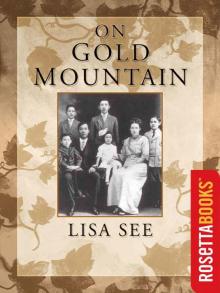 On Gold Mountain: The One-Hundred-Year Odyssey of My Chinese-American Family
On Gold Mountain: The One-Hundred-Year Odyssey of My Chinese-American Family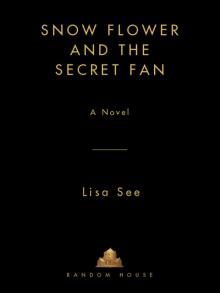 Snow Flower and the Secret Fan
Snow Flower and the Secret Fan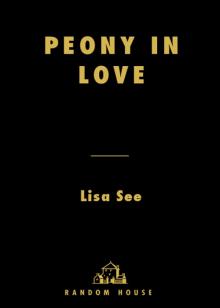 Peony in Love
Peony in Love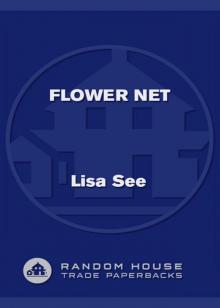 Flower Net
Flower Net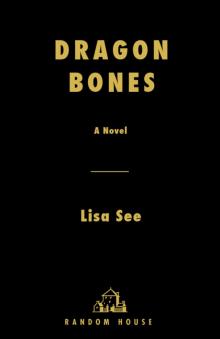 Dragon Bones
Dragon Bones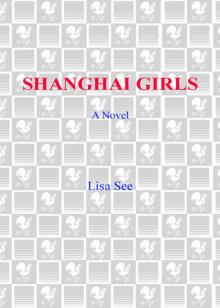 Shanghai Girls
Shanghai Girls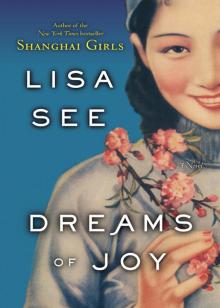 Dreams of Joy
Dreams of Joy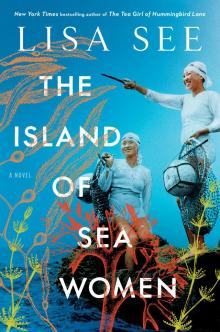 The Island of Sea Women
The Island of Sea Women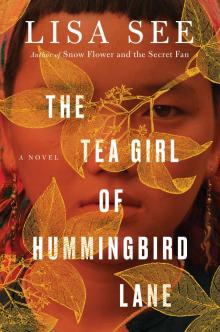 The Tea Girl of Hummingbird Lane
The Tea Girl of Hummingbird Lane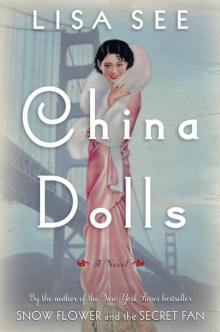 China Dolls
China Dolls The Interior
The Interior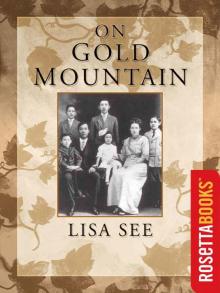 On Gold Mountain
On Gold Mountain